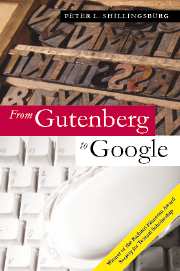Book contents
- Frontmatter
- Contents
- Introduction
- 1 Manuscript, book, and text in the twenty-first century
- 2 Complexity, endurance, accessibility, beauty, sophistication, and scholarship
- 3 Script act theory
- 4 An electronic infrastructure for representing script acts
- 5 Victorian fiction: shapes shaping reading
- 6 The dank cellar of electronic texts
- 7 Negotiating conflicting aims in textual scholarship
- 8 Hagiolatry, cultural engineering, monument building, and other functions of scholarly editing
- 9 The aesthetic object: “the subject of our mirth”
- 10 Ignorance in literary studies
- Bibliography
- Index
4 - An electronic infrastructure for representing script acts
Published online by Cambridge University Press: 23 December 2009
- Frontmatter
- Contents
- Introduction
- 1 Manuscript, book, and text in the twenty-first century
- 2 Complexity, endurance, accessibility, beauty, sophistication, and scholarship
- 3 Script act theory
- 4 An electronic infrastructure for representing script acts
- 5 Victorian fiction: shapes shaping reading
- 6 The dank cellar of electronic texts
- 7 Negotiating conflicting aims in textual scholarship
- 8 Hagiolatry, cultural engineering, monument building, and other functions of scholarly editing
- 9 The aesthetic object: “the subject of our mirth”
- 10 Ignorance in literary studies
- Bibliography
- Index
Summary
Type faces – like people's faces – have distinctive features indicating aspects of character.
Marshall Lee, Bookmaking (1965)Humanity, technology,
is never merely good or bad – or worse:
authentic or unnatural,
but somewhere in the greys our habits spread
as the brain's best stab at rainbow.
W. N. Herbert, “Get Complex” (from Cabaret McGonagall, 1996)This chapter is divided into two sections, reflecting the difficulties I have had in finding a balance between desire and fulfillment, between theory and practice. The first section maps out a conceptual space for electronic representations of literary texts, the second reviews a chaos of practical problems and specific cases that have yet to be resolved.
A CONCEPTUAL SPACE FOR ELECTRONIC KNOWLEDGE SITES
There was a time when all scholars, textual and literary alike, desired one thing in a text: that it accurately represent what the author wished it to contain. The paradigm was God as author and sacred writ as text. Texts that were true to their author's intention contained truth that was worth every effort to get the text right. Textual scholarship in this model was devoted to two complementary but opposite propositions: that the text must be preserved from change, protected from the predations of time and careless or malicious handling, and that the text must be changed to restore the pristine purity it had lost through neglect and time. Correctness and control were the watchwords of this type of work.
- Type
- Chapter
- Information
- From Gutenberg to GoogleElectronic Representations of Literary Texts, pp. 80 - 125Publisher: Cambridge University PressPrint publication year: 2006
- 1
- Cited by



